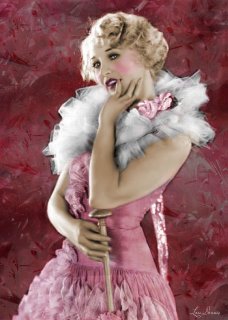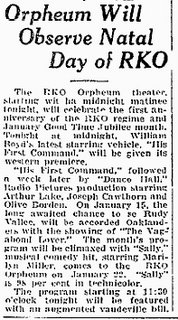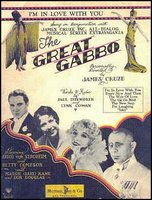
Imagine, if you will, a world some eighty odd years hence --- bereft of any visual home entertainment devices. If you can imagine that, then you might also be able to envision a writer of the same dim future pondering whether or not a film of 2012 was seen by audiences in an eye wear-free 3-D holographic format or not.
Although admittedly not the best comparison, such is the case with many films of the early sound era that now exist (if at all) in forms that are dramatically different from the ones that audiences first experienced.
It's easy to pick up one of the few truly good books on films of the period and learn of a film's plot, who directed it and who could be seen in it. But, in the case of missing films or those which have been visually or aurally altered over the decades, we never seem to quite learn why this has happened. And, more to the point, if we can't possibly see the "XYZ Follies Revue of 1930" today as audiences of 1930 saw it, we're seldom told just what those differences may be.
If there's one thing I've learned over years of sometimes leisurely research and other times frantic quests for information of films of the 1928-1930 era, it's to not entirely believe everything one is told, or reads, or has heard. (And that should certainly include these posts, to be perfectly fair.) Film history is inevitably history as it's interpreted when it's being written. Read a "movie history" book from the 1950's or 1960's and you'll see what I mean.
Even today, with the DVD format that allows for viewing of stunning presentations of titles like "The Broadway Melody," "The Great Gabbo," "Hell's Angels," "Dixiana," etc. and a number of exceptionally solid books on the topic, confusion and unintended misinformation still prevails.
For instance, "The Great Gabbo." A guilty-pleasure film that remains close to my heart ever since first viewing it via a super 8mm sound print from Thunderbird Films while suffering from the 'flu and a high fever (which didn't prevent me from crawling out of bed when it arrived to thread up the projector), I'm sure it looked and sounded mighty fine to me back in the late 70's. The version now available on DVD is almost startling in terms of clarity and in image detail, but ever since seeing this magnificent restoration, I'm unable to really recall seeing it any other way even though I did.
Although persons with impeccable credentials maintain that "The Great Gabbo" never contained color sequences as have long been thought, or (when pressed) that if it did, then it was only for selected showings at a premiere in a key city or two. Scour through newspaper archives, and a different story emerges. We see small theaters in small towns of small cities showing "The Great Gabbo" all the way into mid-1930 (it was released in late 1929), and accompanying advertisements and reviews that clearly mention "natural colors" or "Technicolor" (which it wasn't) or "Prismatic effects" for not just one, but many scenes. One lazy editor or type-setter or reviewer can be dismissed, but as many as twenty or thirty?
Similarly, the 1929 Warner Bros. revue, "The Show of Shows" is often cited today as having had only key sequences in the Technicolor process. Yet, once again, there's contrary evidence --- a lot in this case, indicating the entire film was in Technicolor.
Revealing though vintage press coverage can be, it can also be maddeningly frustrating and puzzling. Try as I might, I could not find a single reference hinting that the infamous "Turn on the Heat" musical number in Fox's 1929 "Sunny Side Up" was ever seen in anything but black and white, and some reviews of "The Broadway Melody" detail a "Technicolor" sequence that doesn't have a thing in common with any footage in surviving prints. Finally, there's mystifying types of comments such as one which cautions that the Marilyn Miller film "Sally" (WB-1929) is "98 per cent in Technicolor."

As I said earlier, don't believe everything you read --- especially when it comes to the fantastically convoluted history of films that talked, sang and danced across screens long, long ago.
(Three melodies from "The Great Gabbo," the first two featuring vocalist Greta Keller.)

###


What a great blog! I just love exploring around all the interesting history you have on display around here.
ReplyDeleteFWIW, the performer in the mp3s of Every Now and Then and The New Step is Greta Keller.